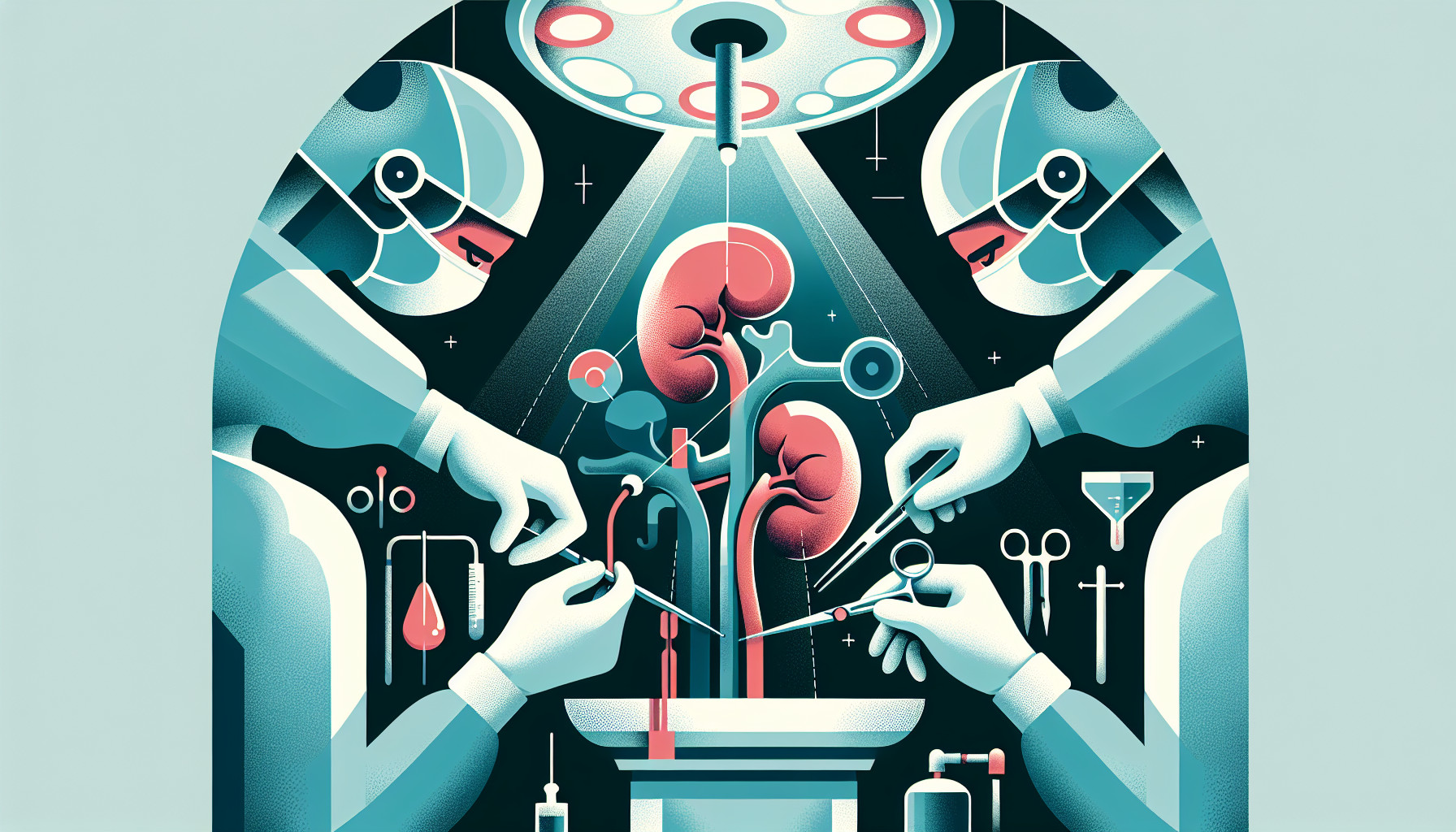Our Summary
This research paper compares three different surgical techniques used to remove a kidney from a living donor. The three methods are: pure laparoscopic donor nephrectomy with Pfannenstiel incision (PLDN), hand-assisted laparoscopic donor nephrectomy via midline hand port (HALDNM), and hand-assisted laparoscopic donor nephrectomy via left iliac hand port (HALDNL).
The researchers looked at operations performed over two years and compared various factors like the age, sex, body mass index of the donors, number of renal arteries, duration of the surgery, the time the kidney was without blood supply (warm ischemia time), and the length of hospital stay. They also considered the overall cosmetic result by measuring the total length of the surgical cuts.
The study found that all three methods are safe and result in good outcomes for the patient. However, the HALDNM method was quicker than the other two, while the PLDN method resulted in a smaller surgical scar.
FAQs
- What are the three different surgical techniques used to remove a kidney from a living donor?
- What factors did the research consider when comparing the three different surgical techniques?
- Which surgical technique resulted in a quicker operation and which one resulted in a smaller surgical scar?
Doctor’s Tip
A helpful tip a doctor might tell a patient about laparoscopic nephrectomy is to discuss with their healthcare provider the different surgical techniques available and the potential advantages and disadvantages of each method, such as the length of the surgery, recovery time, and cosmetic result. It is important for the patient to be informed and involved in the decision-making process to ensure the best possible outcome for their individual situation.
Suitable For
Patients who are typically recommended for laparoscopic nephrectomy are those who require removal of a kidney due to conditions such as kidney cancer, kidney stones, or kidney donation for transplantation. Laparoscopic nephrectomy may be recommended for patients who are otherwise healthy and have a suitable anatomy for the procedure. The minimally invasive nature of laparoscopic nephrectomy results in less pain, shorter hospital stays, faster recovery times, and improved cosmetic outcomes compared to traditional open surgery.
Timeline
Before laparoscopic nephrectomy, the patient will undergo a series of preoperative tests and evaluations to ensure they are a suitable candidate for the surgery. This may include blood tests, imaging studies, and consultations with various healthcare providers.
During laparoscopic nephrectomy, the patient will be placed under general anesthesia and small incisions will be made in the abdomen to allow for the insertion of a laparoscope and other surgical instruments. The surgeon will then remove the kidney and close the incisions.
After laparoscopic nephrectomy, the patient will be monitored in the recovery room before being transferred to a hospital room for further observation. Pain medication and instructions for postoperative care will be provided to help manage any discomfort and promote healing.
In the days and weeks following laparoscopic nephrectomy, the patient will need to follow up with their healthcare provider for regular check-ups and monitoring. They may also need to make lifestyle changes to support their recovery, such as avoiding heavy lifting and staying hydrated.
Overall, laparoscopic nephrectomy is a minimally invasive procedure that offers a faster recovery time and less scarring compared to traditional open surgery. Patients can expect to return to their normal activities within a few weeks after the procedure.
What to Ask Your Doctor
Here are some questions a patient should ask their doctor about laparoscopic nephrectomy:
- What are the potential risks and complications associated with laparoscopic nephrectomy?
- How long will the surgery take, and what is the expected recovery time?
- Will I need to stay in the hospital after the surgery, and if so, for how long?
- What kind of pain management options will be available to me after the surgery?
- Will I need to make any lifestyle changes or follow a special diet post-surgery?
- How will my kidney function be monitored after the procedure?
- Will there be any long-term effects on my health or kidney function after the surgery?
- How experienced is the surgical team in performing laparoscopic nephrectomy procedures?
- Will I have a choice in the type of laparoscopic nephrectomy technique used, and if so, what are the differences between them?
- Are there any specific instructions I need to follow before the surgery to prepare for the procedure?
Reference
Authors: Carnabatu C, Tatum D, Paramesh A, Jeon H, Killackey M, Vijay A. Journal: JSLS. 2023 Jan-Mar;27(1):e2022.00088. doi: 10.4293/JSLS.2022.00088. PMID: 36923163
